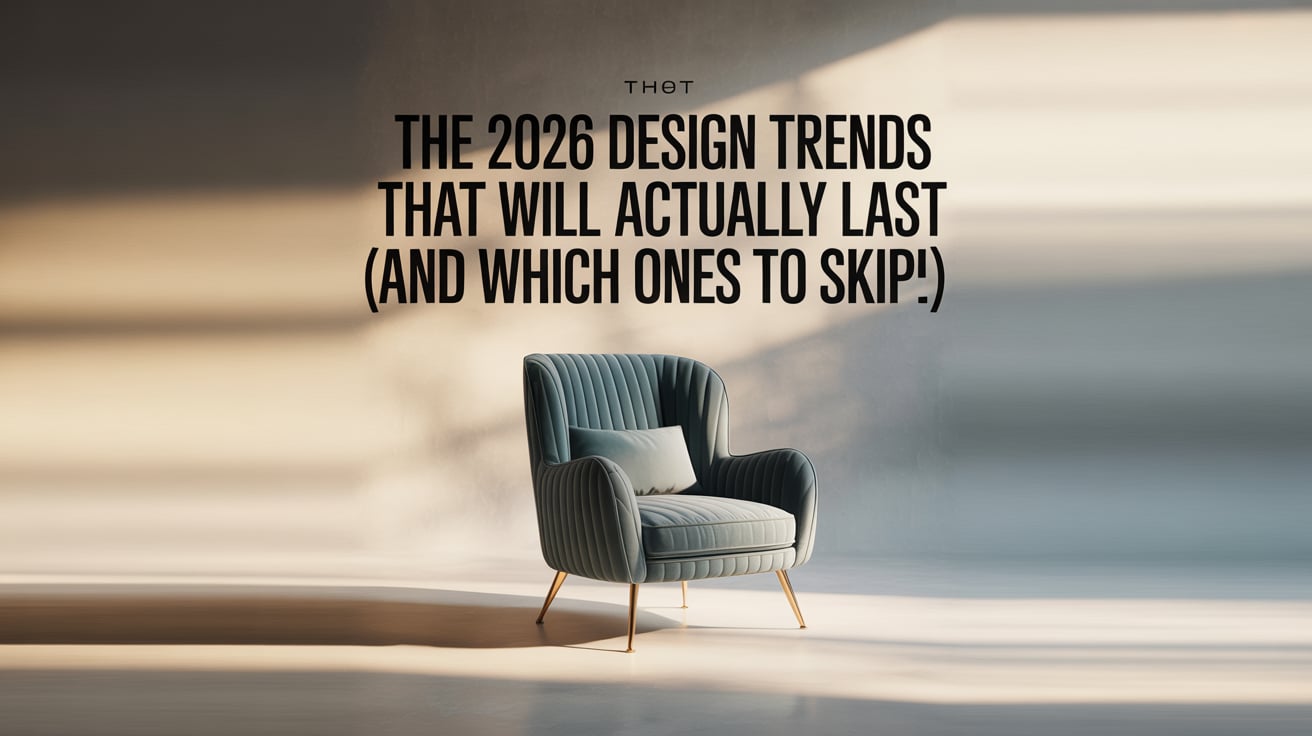
Strategic trend adoption for homeowners who want style without regret. Not every trend is worth following, and knowing which ones will stand the test of time can save you thousands in future renovations.
We're living through one of the most rapid trend cycles in design history. What's hot in January can feel dated by December, leaving homeowners with expensive regrets and spaces that scream "2023" instead of "timeless elegance." But here's the secret professional designers know: not all trends are created equal. Some represent genuine shifts in how we live and what we value, while others are just aesthetic fads amplified by social media. Understanding the difference can save you thousands of euross and years of living with choices that no longer spark joy. As we look toward 2026, certain emerging trends show all the signs of lasting power, while others are already showing cracks in their foundation.
Lasting Trends Have Deep Roots: Enduring design movements respond to genuine lifestyle changes, technological advances, or cultural shifts. They solve real problems or meet authentic needs rather than just looking different for the sake of novelty.
Fads Are Surface-Deep: Short-lived trends focus purely on aesthetics without addressing function or meaning. They're often driven by social media virality rather than practical living needs.
The 5-Year Test: Before investing in any trend, ask yourself: "Will I still love this in five years?" If you hesitate, it's probably better as an accent you can easily change rather than a major investment.
The Instagram Factor: If a trend exists primarily to be photographed rather than lived with, it's likely a fad. Sustainable trends enhance daily life, not just social media feeds.
1. Wellness-Centered Design (Investment Level: High)
Why It's Lasting: The pandemic fundamentally changed how we think about our homes as sanctuaries for physical and mental health. This isn't going away—it's deepening.
What It Looks Like:
Investment Strategy: Focus on elements that improve air quality, natural light, and create calming environments. These add genuine value to daily life and property value.
Skip the Trendy Version: Expensive "wellness gadgets" that are more marketing than function. Focus on fundamentals: better air, better light, better materials.
Why It's Here to Stay: Remote work, flexible lifestyles, and smaller living spaces aren't temporary changes—they're the new normal. Homes must adapt to serve multiple functions efficiently.
Smart Applications:
Long-Term Value: Multi-functional design increases both livability and property value. Future buyers will expect homes that adapt to changing needs.
Avoid: Gimmicky convertible furniture that's complicated to use. The best multi-functional pieces work simply and intuitively.
Why It's Essential: Climate change is driving permanent shifts in how homes need to perform. Energy efficiency is becoming a necessity, not a luxury.
Future-Proof Features:
Return on Investment: These features reduce operating costs and will be increasingly valued by buyers as utility costs rise and climate regulations tighten.
Skip: Superficial "green" features that don't meaningfully improve performance. Focus on systems and materials that deliver real environmental and economic benefits.
Why It's Growing: In our increasingly digital world, there's deep hunger for authentic, handmade elements that connect us to human creativity and skill.
Timeless Applications:
Investment Wisdom: Choose artisan pieces for elements that won't need frequent updating—architectural details, high-quality furniture, and art pieces.
Trend Warning: Mass-produced items marketed as "artisanal." True craftsmanship commands higher prices but offers genuine uniqueness and quality.
Why It's Fundamental: Our biological need for nature connection doesn't change with trends. Biophilic design principles support human well-being in measurable ways.
Lasting Elements:
Smart Implementation: Focus on elements that bring genuine nature connection rather than nature-themed decoration.
Avoid: Fake plants, nature wallpaper, and other artificial representations of nature. They don't provide the psychological benefits of real biophilic design.
Start with Accessories: Test trends with pillows, artwork, or small furniture pieces before committing to major changes. This allows you to experiment without major financial risk.
Focus on Function: The best trends solve real problems. If a trend doesn't improve your daily life, it's probably not worth the investment.
Consider Your Timeline: If you're planning to sell your home in the next few years, stick to more universally appealing choices. If you're planning to stay long-term, you have more freedom to express your personal style.
Mix Old and New: The most interesting spaces combine timeless elements with current trends. This creates depth and prevents your home from looking like a showroom.
Invest in Quality: When you do choose to follow a trend, invest in quality pieces that will last. Cheap trend pieces often look dated quickly and need frequent replacement.